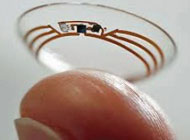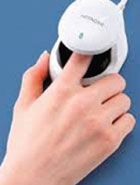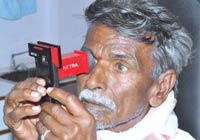Also, download this story from the electronic issue here
Merging technology advances with low price is no longer farfetched with mobile and wireless gadgets. Such solutions are a welcome respite for patients and users worldwide amidst the rising costs of healthcare, says Angelica Buan in this article on mobile healthcare or mHealth.
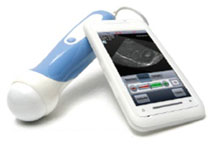
Healing the high costs
Driven by adoption of vital signs monitoring and in vitro diagnostic (IVD) devices, the mobile healthcare (mHealth) market will grow eight-fold from US$5.1 billion in 2013 to US$41.8 billion in 2023, according to Lux Research.
This is backed by UK-based information provider Visiongain’s research on mHealth and it says it will be valued at US$6.7 billion before the onset of 2015.
Furthermore, Lux also says venture funding for mHealth devices has risen sharply since 2007, reaching US$480 million in 2013, driven by the launch of the iPhone and growing popularity of the smartphone.
The above is music to patients’ ears, since healthcare costs are increasing each year. In a new study by PricewaterhouseCoopers (PwC)’s Health Research Institute (HRI), medical and healthcare-related spending will climb 6.8% in 2015. Apart from adjustments in professional rates, disease management, and drug prescriptions, integration of technology to meet government regulations on diagnosis accuracy and efficient delivery will raise overall costs of healthcare.
Influx of gadgets
The influx of mobile and wireless gadget-enabled healthcare devices, thus, favours end-users who seek affordability, ease of use, yet quality healthcare.
The mHealth tools also include wearables such as smartwatches, smartphones, and tablets. Visiongain says that connected devices and machine-to-machine technology, as well as mobile network advancements and emergence of low-cost smartphones will accelerate mHealth market growth.
This projection is already encouraging mobile operators, software developers, data management providers and healthcare practitioners worldwide to anticipate the increased demand for remote monitoring and diagnosis of, and communication with patients.
Growth of clinical devices
Clinical mHealth devices will soar past consumer-focused counterparts after a slow start due to regulatory approval barriers and slower integration into physicians’ workflows, says Lux. For instance, clinical vital signs monitoring devices will grow from US$372 million in 2013 to US$16 billion in 2023, a CAGR of 46%, while consumer applications will grow from US$2.5 billion to US$7 billion, an 11% CAGR.
“Consumer devices have seen a lot of hype but clinical devices will surpass their consumer counterparts in revenues by 2020, helped by valueadded software services and generally larger revenue streams,” said Nick Kurkjy, Lux Research consultant and lead author of the report titled mHealth Showdown Consumer and Clinical Devices’ Battle for Market Dominance.
“Clinical markets will be able to pay much more for comparable services, especially if a device is able to reduce patient recovery times or readmission rates, which can lead to outsized cost savings for the healthcare provider,” he added.
Lux projects that the vital signs and IVD sectors combined will total a US$32.9 billion market by 2023.
Innovations on the market
Meanwhile, the US FDA has relaxed approval requirements for some mHealth devices. This means that smartphoneenabled devices such as clinical digital thermometers, ophthalmic cameras, and stethoscopes, which are exempted from pre-market reviews that guarantee safety, as required by the FDA, will be well positioned in the market from this year onwards.
Recent mHealth technologies introduced on the market include:
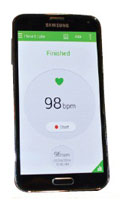
- South Korean electronics firm Samsung’s new Galaxy S5 features a built-in Heart Rate sensor.
- Consumer electronics giant Apple has been creating quite a stir with its iWatch. The smartwatch will have a sensor technology that focuses on health and fitness, and could monitor everything from blood-sugar to nutrition. According to recent reports iWatch might come in multiple, sizes with a fashionable design, in a size of an iPod nano. However, the release date that was initially in the second half of 2014 may be pushed to 2015, pending the FDA’s medical device certification.
- Swiss drug maker Novartis and US technology firm Google are jointly developing a “smart lens” technology that has the potential to address ocular conditions. It involves non-invasive sensors, microchips and other miniaturised electronics that are embedded within contact lenses. It will aid diabetics to monitor their own blood glucose levels, or help people with eye focusing problem. The device will measure glucose in tear fluid and send the data wirelessly to a mobile device. As for helping people with presbyopia, in which ageing eyes exhibit a progressively diminished ability to focus on close objects, the lens technology, which will act like an autofocus of a camera, is expected to help restore the eye's ability to focus.
- Hitachi Europe and Vienna-based technology firm MIG have rolled-out mobile wi-fi scanners that offer convenient mobile identification for the patient at the point of care. The BIOMIG device, based on Hitachi's finger vein authentication technology, was introduced in Turkey recently. The finger vein authentication technology reads the pattern of the vein inside the finger, rather than external characteristics, making it difficult to replicate. Other authentication methods such as finger print, facial scanning and voice authentication are all based on external features that can be recorded without the individual being aware, which is a precursor for credential theft.
- The universal mobile electrochemical detector (uMED), developed by a team of researchers at Harvard University, is a handheld electrochemical detector that can perform chemical analyses and transmit results to a Cloud database from any mobile phone, even low-end models. It can detect disease in a person’s blood, check local water supplies for toxic pollutants such as cadmium and lead, and transmit the information directly to the Cloud software via the headphone of any mobile phone, not just 3G/4G smartphones. This means it is able to perform chemical, scientific, medical, and environmental tests using any mobile phone over any cell network anywhere in the world. Its 3.7-V lithium polymer battery can go on for months or even years on a single charge. For diagnosis, what is required is to insert the strip, select the test, apply the sample and place a phone call. Its testing equipment includes three electrodes and a small sample well for fluids.
- Netra (a brainchild of researchers at MIT's Med Lab) is said to be the world's first smartphone diagnostic tool. It is an easy-to-attach add-on for self-testing eyesight with a mobile phone, using a series of digital interactions. The prototypes are already used by 29 research teams in 14 countries.
